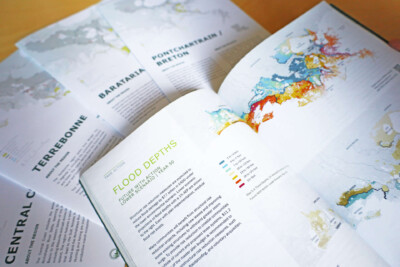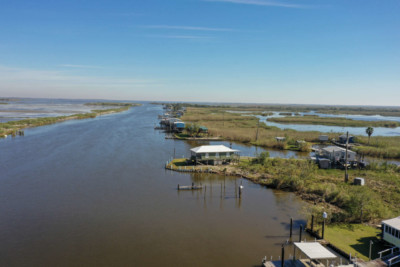Since the 1930s, Louisiana has lost over 2,000 square miles of land to the Gulf of Mexico due to a suite of anthropogenic and environmental factors—a staggering loss exacerbated by climate change and intensifying storms. After Hurricanes Katrina and Rita devastated coastal Louisiana in 2005, the Louisiana Legislature created the Coastal Protection and Restoration Authority (CPRA), tasking it to coordinate federal, state, and local restoration efforts. Since 2007, the CPRA has developed a series of Coastal Master Plans to help evaluate and plan the wide variety of projects across the coast, harnessing the combined expertise of scientists, engineers, environmental professionals, policymakers, and Louisiana citizens to prepare for and respond to a climate-changed future.
For the 2023 Coastal Master Plan, SCAPE collaborated with CPRA to develop an overarching visual communications strategy and graphic identity underpinning the document, as well as collateral for outreach and engagement—including model output maps, aerial regional views, explanatory diagrams, data visualizations, and fact sheets for each project, parish, community, and region. The broader goals of this three-year collaboration included enhancing the plan’s visual accessibility, comprehension, and weaving regional and local identity into the overall narrative. At a broader scale, the master plan functions as a long-term guide to restoration and risk reduction investments throughout the state, undertaken in parallel to related efforts to promote sustainable commercial and recreational activities across the coast.
Learn more:
- Visit the CPRA website for more information, updates, and opportunities for engagement
- View the CPRA 2023 Master Plan
- Explore Louisiana’s 2023 Coastal Master Plan Data Viewer
- Learn more in these videos: Planning With Uncertainty and Project Benefits
- Read more from Halle Parker for WWNO (January 2023)
Client
- Louisiana Coastal Protection & Restoration Authority (CPRA)
Collaborators
Arcadis













